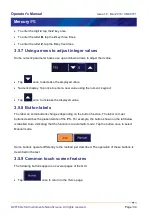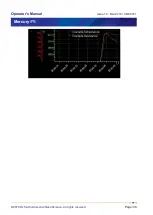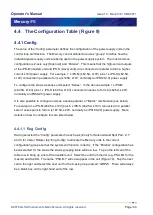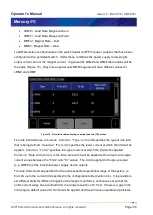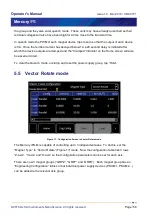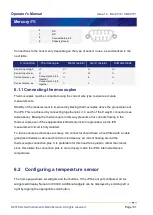
Operator's Manual
Issue 14
/
Mar 2016 / UMC0071
Mercury
iPS
©2016 Oxford Instruments NanoScience. All rights reserved.
Page
48
inductive voltage of 3.5V plus a resistive voltage of 1.69V giving an estimate maximum
operational voltage of 5.2V. So the voltage limit should be set to between 5.5 and 6V.
4.4.4 I to H (A/T)
This is the current to field ratio which is a design parameter from the magnet geometry. The
Mercury uses this value to display equivalent applied field in Tesla. So if this value were 8.6A/T
and the magnet current was 100A the central field would be 11.628T. If the home screen was
set to display “Field (T)” it would display 11.628T in this example.
4.4.5 Ind (H)
This is the self-inductance value of the magnet the unit group is driving. This value is used in
the Mercury iPS to set the damping factors in the current drive control loops based on a
estimate of the load time constant.
4.4.6 Trans (ms)
This “Transient Time” is used in conjunction with the “Voltage Limit” (see above) as a
mechanism of magnet QUENCH detection. If the measured voltage at the group output
terminals exceeds the voltage limit for longer than this transient time then the power supply
group enters QUENCH mode. However, if the measured voltage at the group output terminals
exceeds the voltage limit for less than this transient time then the power supply continues in
normal operation mode. This parameter is used to prevent false trips of the iPS due to noise
voltage spikes or spikes due to flux jumps.
It is not recommended to set the transient time to less than 300ms, typical values sould be
between 500ms to 3000ms.
4.4.7 Switch
Each Mercury unit, iPS-M or iPS-S has a switch heater drive output. This parameter specifies
which one of the group is the unit being used for the switch heater current output (e.g. PSU.M1
for the master unit).
4.4.8 Sw Cur (mA)
This parameter specifies the value of the switch heater current required to raise the switch
temperature up to a level where the switch is open (superconducting wire in the switch coil

